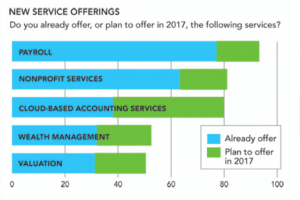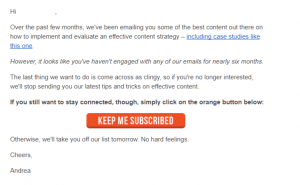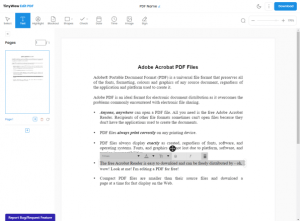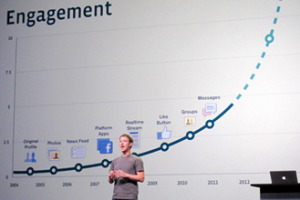This level of concern is based on very real problems faced by organizations.
- 87% of global workers are either “not engaged” or “actively disengaged” in their work (Gallup “State of the Global Workplace Report”, 2013)
- 76% of employees feel it is necessary that their company invests in their personal career development (Saba “Global Leadership Study”, 2015)
- But 66% don’t see an opportunity for professional growth at their current employer (TINYhr “2014 Engagement Report”)
- 49% are not satisfied with their current supervisor (TINYhr “2014 Engagement Report”)
Though many people “talk” about employee engagement, few actually “define” it. My favorite definition comes from EngageForSuccess.org – a “movement” (as they call it) looking for a better way to work.
“Employee engagement is a workplace approach designed to ensure that employees are committed to their organization’s goals and values, motivated to contribute to organizational success, and are able at the same time to enhance their own sense of well-being.”
In short, employee engagement is a way to align organizations and employees in a meaningful way. This article will lay out 5 inspiring and focused ways that our customers have engaged their employees and enhanced their culture in meaningful ways.
1. Making bosses better coaches. The City of Houston
Two years ago, the City of Houston decided to undergo a major cultural and organizational transformation with a holistic talent management program called “HEAR”(Houston Employee Assessment Reviews) — aimed at creating a culture of listening, learning and performance improvement. At the center of this program was a relentless focus on first-line managers, and the need for and responsibility of these managers to regularly communicate with their team members. To support this requirement, a new mantra was communicated to all 22,000 city employees by the CHRO – “we can solve any issue at the City of Houston… we just need to know what they are”. Employees were strongly encouraged to surface issues with their managers, and managers were trained to seek their input on issues as part of their required 1-on-1 coaching sessions. Every manager participated in HEAR training on these new expectations, and mandatory goals were included in their performance reviews. With manager-employee communication as the centerpiece, the HEAR program was so successful that the City of LA has adopted and is currently rolling out their own HEAR program! [Watch video on the City of Houston]
2. Setting meaningful and inspiring goals. Rescue SCB.
A young public-sector marketing agency in San Diego – called Rescue SCB – is a behavior-change marketing company that develops campaigns to reach youth and young adults to fundamentally change unhealthy behavior. Rescue sees itself as a “change agent” and hires an extremely diverse group of individual change agents. Core to Rescue’s culture and success is their empathy for a critical value of all their “customers” (troubled youth) – being rebellious. To reinforce the importance of this value with every employee, they include “responsible rebelliousness” as a goal that every employee is measured against. Along with “passionate perseverance” and “respect for data”. To create these goals, the management team canvassed everyone at the agency for ideas and challenged their creative team to turn the top ones into truly inspiring goals. I was personally inspired by these goals, and it has elevated my appreciation for the use of carefully considered, meaningful words to unify a team and company. [Read more about Rescue SCB.]
3. Involving employees in meaningful ways. Guitar Center
Imagine playing any instrument you want, any time of day, at work. It’s been a dream of mine since I was a kid. But never mastered a one. If you work at Guitar Center, you have! And you can! Guitar Center employs 10,000 people, the vast majority being musicians who, collectively, know everything there is to know about virtually every instrument that exists. The talent management team at Guitar Center realized that this “collective mastery” is a gold mine that, if harnessed, could significantly enhance Guitar Center’s marketing and merchandising effectiveness, as well as customers’ in-store experience. Guitar Center uses Saba’s embedded social functionality to empower store associates across its 260 stores to collaborate on marketing and merchandising campaigns. And it’s had a dramatic effect on store performance. Case-in-point – a recent launch of the “Vintage Synth” software product (synthesizer sounds in the early days of synthesizers) was one of the most successful launches in the history of Guitar Center due to collaboration between 300+ rocking store associates around the U.S. The launch team ran a contest for the best merchandising campaign, and, not only did they find the winning campaign, but thousands of store associates were involved in the conversation that took place. The biggest win was the level of engagement across Guitar Center stores that drove extraordinary customer experiences! [Watch Guitar Center employees in action.
4. Promoting peer-to-peer recognition. Saba
As you might expect, we use the Saba Cloud Suite as our internal talent management system. One of the features that has woven itself in our company’s culture is “Impressions” – the ability to post peer-to-peer comments and related badges about anyone in our company. It’s viewed as one of the best ways to show appreciation to people who go out of their way to help you get things done. People love getting them, and it encourages them to do the same for others. Plus, it makes people look at the “positive side” of our work and our mission – the “glass half full” effect. Our “impressions culture” has created a secondary effect of driving new creative team-building activities. Once a quarter, Saba gives out five “Impression Awards” to the most active people and teams posting impressions. The marketing team won one a few months ago and decided to do a “Team Cook” – 20+ people cooking together, creating a feast they never dreamed they could make together. We see it now as “a team that cooks together, stays together.”
5. Creating a culture of learning and professional growth. Express
Express – a dual gender specialty apparel retailer targeting the 20 to 30 year old customer – has taken an “all-in” approach to organizational and professional development. They use a combination of blended learning (self-paced online and instructor-led), performance goals, reviews and development checklists,(“blueprints for success”), and peer-to-peer recognition (badges and written “impressions”) to engage and develop their workforce. Their millennial-centric workforce is engaged in using Saba to help fulfill their own desire for real-time feedback and recognition as well as opportunities to develop their professional career. In fact, 96% of their employees have taken advantage of learning opportunities within 6 months of launching Saba’s talent management system and a significant percentage have contributed or received peer-to-peer feedback through “Impressions”.
Hopefully some of these examples have sparked ideas for your own organization to engage your employees in meaningful ways. We’d love to hear from you on ideas you’ve crafted and tried. Engagement and culture will forever be an evolving art.
Business & Finance Articles on Business 2 Community(127)






